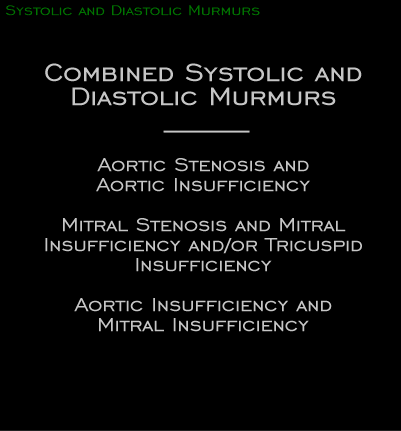
As mentioned previously, diastolic murmurs occur most frequently in association with systolic murmurs, indicating combined lesions such as aortic stenosis and insufficiency or mitral stenosis with mitral insufficiency and/or tricuspid insufficiency. Combined systolic and diastolic murmurs may also be mistaken for the continuous murmurs that characterize a patent ductus arteriosis and systemic arterial-venous fistulae
